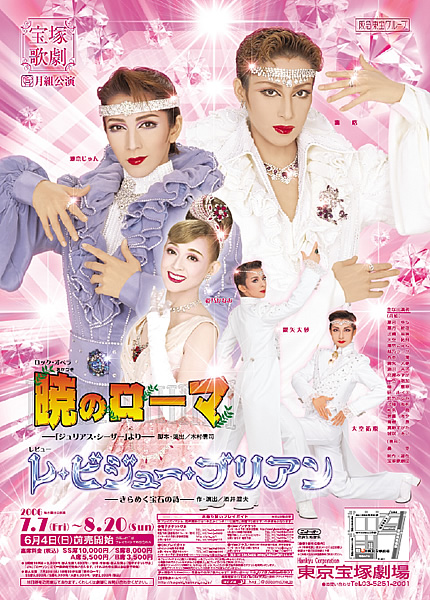After one year at the school, each student becomes either an otokoyaku (player of men's roles) or musumeyaku (player of women's roles). The starring otokoyaku are by far the most popular of the actresses in the Revue, so there are never enough spaces for all of the girls who would like to be otokoyaku. The decision is based on height, physique, voice, etc. Otokoyaku study how to act like, talk like, and move like men, while the musumeyaku train in being a strong and graceful feminine counter to the male roles (the 1914 rationale was that the musumeyaku would learn to be the ideal women, while the otokoyaku would learn to empathize with men and thus become better wives). The students learn techniques that signify gender, including stylized movements, gestures, and speech patterns. After their training is complete the students will join one of the troupes.
Nearly all of the fans of Takarazuka are schoolgirls and middle-aged women. A lot of them enjoy the portrayal of pure romance, rather than a physical attraction between a man and woman. Many of the fans adore the Takarasiennes and will stand outside of the theatre after a show, waiting to get a glimpse of their favorite stars on their way home, and maybe a photo or autograph. There are fan clubs, three official magazines, and of course, a plethora of collectibles.
So, the show I'm seeing is a rock opera called "Rome at Dawn", based on Julius Caesar. *Awesome*. A totally bizarre, totally Japanese way to end my year-long sojourn here.

Here's an article on it.
And another.
No comments:
Post a Comment